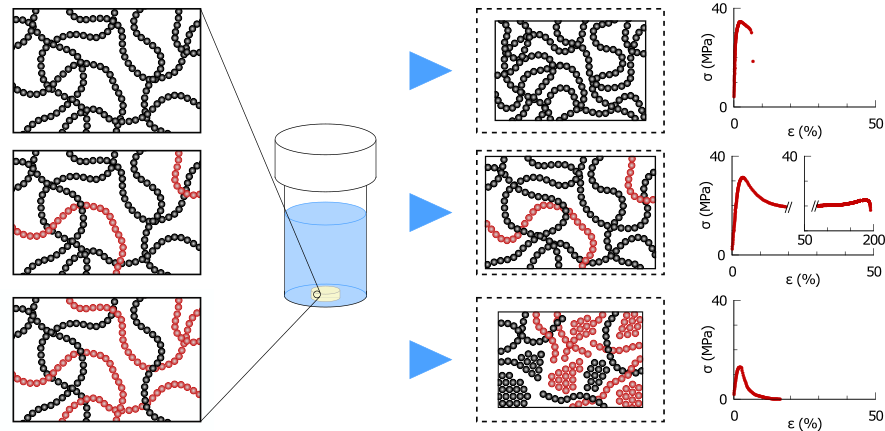With coronary heart disease being one of the world’s leading causes of death, there is huge demand for improved medical devices that can improve treatment, in particular bioresorbable cardiac stents.
Poly-L-lactide (PLLA) is a popular choice for these stent materials due to its bioresorbability and superior mechanical properties compared with other polymers. Unfortunately, PLLA presents several limitations which impede clinical use of these devices, including slow degradation, and embrittlement during degradation.
Blending PLLA with novel polyethylene glycol functionalised poly(L-lactide-co-ε-caprolactone) (PLCL-PEG) significantly accelerates the degradation process, providing an effective method of tuning the degradation timescale to more closely match the human body’s natural healing time. The structural rearrangements that cause embrittlement (densification by aging or crystallisation) during degradation can also be manipulated using blending. By addition of 10-30% PLCL-PEG to PLLA, significant ductility can be retained during degradation, avoiding the embrittlement that affects pure PLLA stents.
PLLA:PLCL-PEG blends show promise as bioresorbable cardiac stent materials, providing a faster, more tuneable degradation lifetime, and reduced tendency for embrittlement during degradation.
Figure: PLLA (black) and equal blends of PLLA with PLCL-PEG (red) display structural rearrangements (densification by aging or crystallisation) during degradation that cause embrittlement, but blends with small PLCL-PEG addition resist these changes and retain ductility.
R. N. Oosterbeek, K-A. Kwon, P. Duffy, S. McMahon, X. C. Zhang, S. M. Best, and R. E. Cameron, “Tuning structural relaxations, mechanical properties, and degradation timescale of PLLA during hydrolytic degradation by blending with PLCL-PEG”, Polymer Degradation and Stability 170, 109015 (2019)

